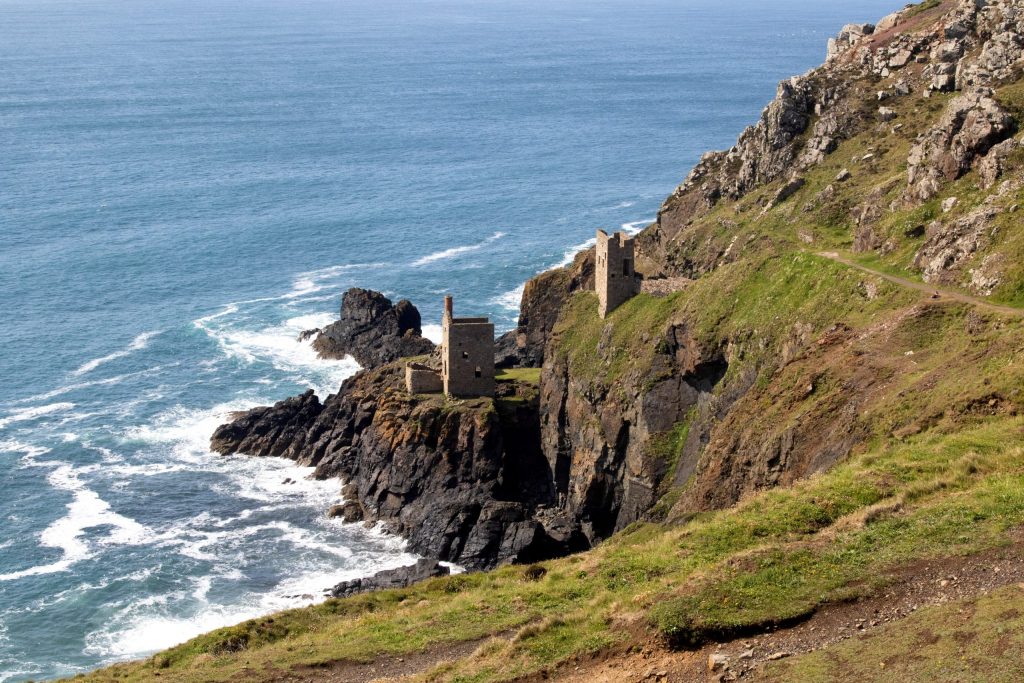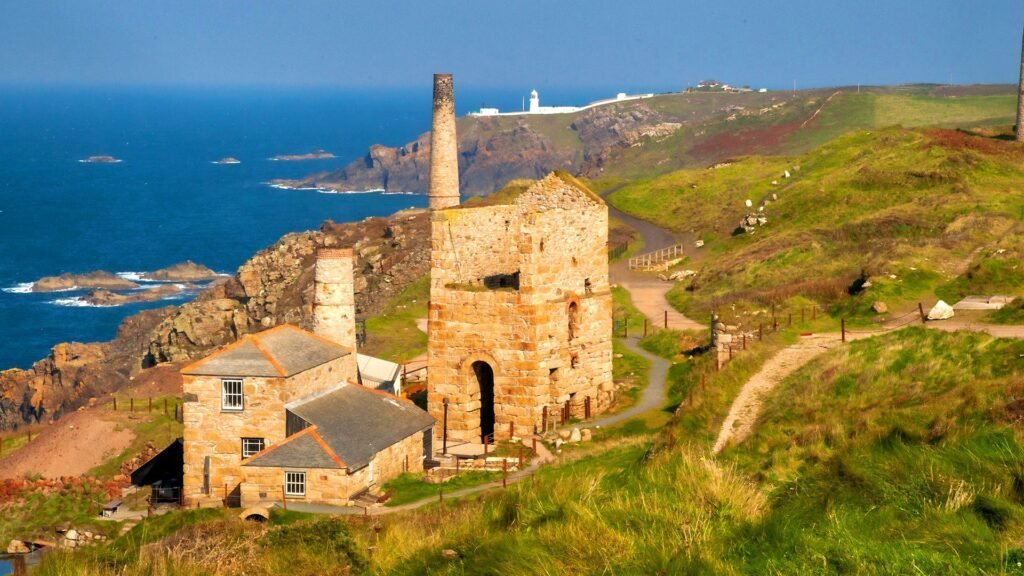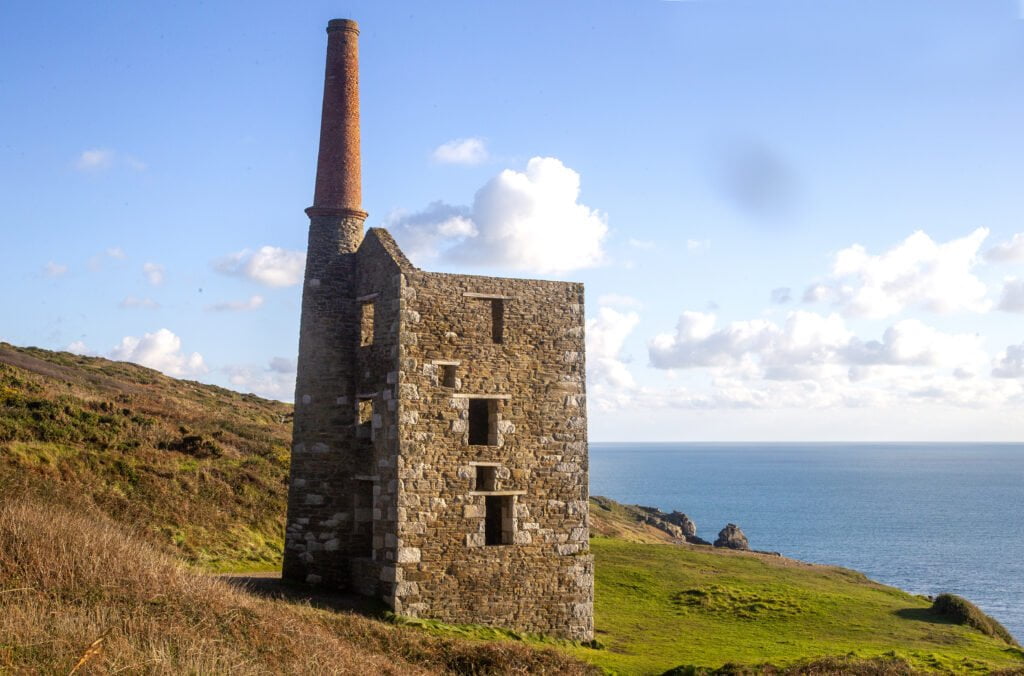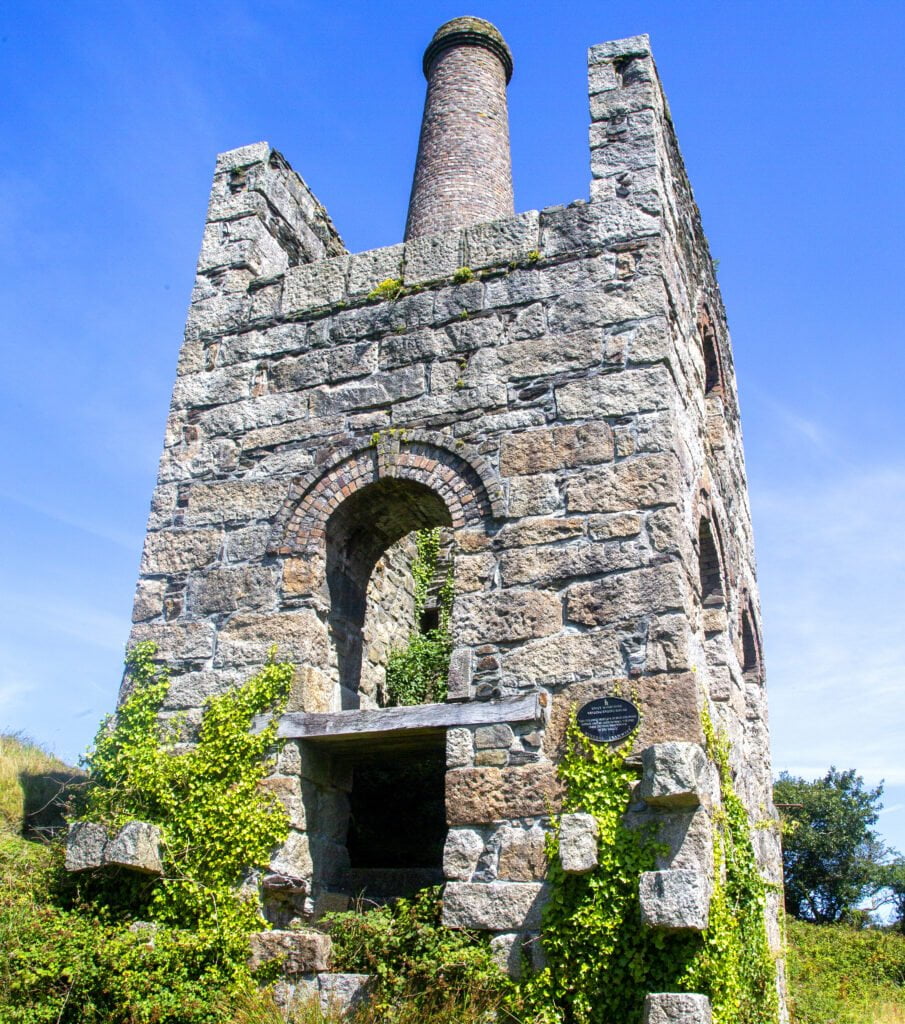The article was written in 1995 by Allen. All photos were taken by Terry Harry in 2020
Interest in Cornwall’s old, ruined, mine enginehouses has never been greater. Throughout the mining districts enginehouses have been restored, renovated or stabilised, and many different groups and societies have been involved. At Wheal Coates, Wheal Prosper and Carn Galver the National Trust has been involved; at Killifreth, Carrick District Council; at Botallack it was the Carn Brea Mining Society, on United Downs, Cornwall County Council and in the east of the county the Duchy of Cornwall has tended to take responsibility. Add to these the large number of private individuals who have converted enginehouses into dwellings, and we have a considerable number of buildings where work has been done to prevent them falling into ruin.

Despite this high-profile activity, and the attendant publicity, newcomers and holiday makers still ask the question: “What is that strange, large building?” Locals also wonder why these enginehouses are so unevenly spread across Cornwall, and why they vary so much in size and shape. A frequent question, though asked rhetorically, is: “Why can’t they be left alone?”
Although it seems fairly obvious that enginehouses tend to be where mining has taken place, it is apparent that the spread of such buildings across Comwall and Devon does not always represent the extent of mining in those districts. Sometimes a prominent engine-house, for example, the one at Ventonwyn (St Austell). or group of them, as at the Lovells (Wendron). will lie far from intensive mining areas, on small, little known mines. Several extremely important mines, which dominated districts for centuries, have no enginehouse as a memorial. For example, Cam Brea Mine, perhaps the second most important tin mine in Comwall has very little to see now in the way of buildings, the great Dolcoath has a mere two enginehouses, and yet the mines on the Great Flat Lode, only middle range mines historically, have some twenty enginehouses spread along their length.

Enginehouses come in various sizes and shapes, although the majority conform to a few basic rules. The commonest enginehouse shape is that used to house a Comish beam engine. The main characteristics of the beam enginehouse are the tall rectangular outline, with small irregular windows, and a chimney either attached to a comer of the building, or free standing. The front wall has a ‘U’ shape and is extremely thick, in order to carry the weight of the beam or bob. Bobs could weigh from between five and sixty tons. Sometimes the boilerhouses remain attached to the side or rear of the enginehouses, but most have long since gone. Rarer are enginehouses which contained horizontal winding engines or whims. These buildings are lower and longer than the beam engine-houses. A good example is beside the railway at South Tincroft.
The largest enginehouses contained pumping engines and could be truly enorrnous up to sixty feet high. The one at Taylors Shaft, East Pool, is a fine example of one of these, and still has its 90″ engine. A typical layout for pumping and winding houses can be seen at such mines as Cooks Kitchen, South Condurrow (Marshalls), Wheal Peevor and Wheal Uny, where the pump stands directly beside the pumping shaft and the whim house stands a short distance away at right angles. There is a great deal ofv ariety in the layout, however, and sometimes different shafts were used for these purposes. There are also several other types of mine building still standing, including calciners, count houses and miners’ changing houses (drys).

An important subject for discussion among industrial archaeologists relates to what should or should not be done to these old buildings. Should they be renovated, stabilised or repaired in any way at all? One view is that they should be allowed to fall gracefull into dignified old age as attractive, ivy-covered ruins. Considerable argument has taken place over such things as the type of pointing to be used when walls are repaired and whether ivy should be removed. Even the shape of the cemented wall capping gives rise to violent disagreement.
There appears to be universal agreement that the areas around the enginehouses should not be ‘cleaned up’ and smoothed over. The mining landscape is as important to the industrial archaeologist as the enginehouse itself. Despite this, where ready money has been available to carry out restoration/conservation work on mine sites, the tendency has been to ‘Surreyfy’ the landscape, destroying most of what is interesting and worth studying, at the same time as destroying the habitats of thousands of animals and birds. Witness South Frances between Pascoes and Marriots Shafts, as well as the efforts at South Tincroft and at Taylors Shaft.

What can we do about these valuable relics of Cornwall’s mining past? What should we do? Should we do anything? Will the desire to ‘do something’ attract those who merely wish to make money from schemes which can be conjured up, and that they can convince some local authority will bring ‘benefit’ to the area? Is it a case of any action is worse than no action?
The curse of urbanisation on the Cornish landscape can be seen everywhere. Enginehouses stand in sterile former mining landscapes, isolated and often incongruous. Urban blight often created by inappropriate use of Derelict Land Grant money, has been visited upon some sites so completely, that countryside which, until recently, seemed a candidate for World Heritage status, now is more likely to be shunned and avoided by true industrial archaeologists and locals alike.
